Home> Company News> How To Adjust A Hydraulic Pump Swash Plate ?
- AddressNorth Tan Street, Jinan,Shandong
- Factory Address123 Ubi Ave 3 #12-30 Frontier Singapore 408867
- Worktime9:00-18:00(Beijing time)
- Phone(Working Time)86 0531-8299 9952
Hydraulic pumps are integral to a wide range of equipment and machinery, from tractors and construction equipment to pumps for residential use. Hydraulic pumps are also relatively simple machines, but there are some parts that can wear out over time or need regular maintenance. One part in particular is the hydraulic pump swash plate, which must be properly adjusted for optimal performance. If you have a large piece of equipment with hydraulic operations, then read on and find out how to adjust a hydraulic pump swash plate!
Swash Plates
Swash plates are used in hydraulic pumps to move fluid in and out of the pump. They also control the flow of fluid in and out of a hydraulic pump, depending on their position.
Swash plates are made out of metal or plastic, depending on what type of hydraulic system you're working with. The most common type is a metal swash plate; this can be found in many different sizes for different applications such as agriculture, construction machinery and mining equipment among others
Adjusting The Hydraulic Pump Swash Plate
Before you can adjust the hydraulic pump swash plate, you need to take out the pump and check it for any damage or cracks. If there are any issues with your old hydraulic pump, then it's best to replace it with a new one so that you don't have any further problems down the road.
After removing your old hydraulic pump from its housing (and making sure that there aren't any leaks), put in a new one if necessary and make sure all of your hoses are connected correctly before turning on power again.
If you're having issues with your hydraulic pump, then it's best to contact a professional who can help you fix the problem so that you don't have any further problems down the road. If there are any issues with your old hydraulic pump, then it's best to replace it with a new one so that you don't have any further problems down the road.
How To Adjust A Hydraulic Pump Swash Plate ?
To adjust a hydraulic pump swash plate, you'll need to remove it from the pump housing and check for damage. If there isn't any, you can proceed with making adjustments.
-
Remove the pump from its mounting location and place it on a flat surface such as a workbench or table. The same goes for removing your hydraulic cylinder assembly if you have one installed onto your machine's frame already; otherwise skip this step if not applicable (e.g., if working with just an engine).
-
Check that all screws holding down parts like bearings are tight but don't overtighten them because doing so could cause damage which could lead to premature failure later on down line when we're trying our best not only save money but also time as well! Keeping everything aligned properly while making sure nothing slips outta place while we're working here today will help ensure long lasting results without having too many hiccups along way like maybe getting stuck somewhere without being able
First you will need to take out the pump, then check it for any damage or cracks. Then you will have to adjust the swash plate to get it level and parallel with the housing.
First you will need to take out the pump, then check it for any damage or cracks. Then you will have to adjust the swash plate to get it level and parallel with the housing.
You may have to remove your hydraulic pump from its housing in order to get access for adjusting purposes. The most common way of doing this is by using an Allen wrench (a special wrench used on screws) in order to loosen a bolt holding down your hydraulic pump against its housing base so that you can slide it out easily. Once removed from its home, inspect both sides of each piece carefully: look for cracks or other signs of damage such as dents and scratches; these could indicate internal damage which would require replacement parts before reassembling everything back together again!
You can also use a level to check that your swash plate is level and parallel with its housing. Once you have checked for any damage, it is time to put everything back together again. Start by replacing the gasket around your pump, then place it back into its housing in order for you to adjust it properly.
Remove the return line.
Once you have removed the return line, it's time to take out the pressure and suction lines. Make sure that you have disconnected these lines from their respective ports before removing them from their brackets, as they tend to be tight. Once all three lines are out, check your swash plate angle with a protractor. You want to ensure that it is at 90 degrees (perpendicular) before proceeding any further with adjustments or repairs on your hydraulic pump assembly.
If there is any misalignment between the pump shaft and swash plate after checking with a protractor, rotate either component until this misalignment has been corrected by hand--you don't need tools for this step! The orientation of each component relative to one another should remain constant throughout all stages unless otherwise specified by manufacturers' instructions or manuals provided by manufacturers themselves; however, if these devices cannot withstand torque without breaking apart then try loosening them slightly instead - just enough so they won't break apart while being rotated back into place after making necessary adjustments elsewhere within those assemblies themselves."
Remove the pressure line and suction line.
Before you can adjust the swash plate, you will need to remove the pressure line and suction line from the pump. To do this, follow these steps:
-
Remove screws from top of pump body that hold pressure and suction lines in place (see diagram).
-
Unscrew nuts holding end fittings onto each end of each line (see diagram).
Check the swash plate angle with a protractor.
-
Use a protractor to check the angle of the swash plate.
-
The angle should be between 15 and 30 degrees. If it's too high or low, you can adjust the swash plate with a wrench (if there is one) or by using an adjustable wrench.
Check the pump shaft and swash plate alignment.
You can check for alignment by putting your finger on the swash plate and then gently rotating it. If any of the holes in the plate are misaligned with their corresponding holes in the housing, you may have to replace that part.
If there is any damage to either component, it will need to be replaced as well. Damage can come from improper installation or from wear over time through use of your equipment.
Rotate the pump housing to adjust the position of the swash plate, if necessary.
As you rotate the pump housing, check that the swash plate is moving in a straight line and not getting stuck. If necessary, use a wrench to gently adjust any bolts securing the housing and reposition it until it slides smoothly along its rails.
Once you've verified that your swash plate is moving freely up and down, check alignment by looking at how far the bucket extends from one side of the machine compared to another (you can use a ruler or tape measure for this). If one side is higher than another, loosen two or three bolts on opposite sides of each wheel assembly at once until they're evenly spaced apart from each other--this will bring them closer together so they don't rub against each other when rotating around their axis during operation.
Once you've verified that your swash plate is moving freely up and down, check alignment by looking at how far the bucket extends from one side of the machine compared to another (you can use a ruler or tape measure for this). If one side is higher than another, loosen two or three bolts on opposite sides of each wheel assembly at once until they're evenly spaced apart from each other--this will bring them closer together so they don't rub against each other when rotating around their axis during operation.
Re-install the pressure line, then tighten the bolts in a crisscross pattern.
Now that you have adjusted the swash plate, you need to re-install the pressure line, then tighten the bolts in a crisscross pattern. The pressure line is the one that goes to the pump and has a fitting on it. The suction line is the one that goes to your tank and does not have any fittings on it. Finally, there is also a return line which returns liquid back into its reservoir after use (you won't be working with this).
To re-install these components:
-
Make sure you've removed all traces of oil from your hands so as not to contaminate anything else in this process! Also make sure everything looks clean before proceeding further; if there's any dirt or grime present anywhere along these lines then wipe them off thoroughly until everything looks good again (this will help prevent leaks later on).
Fill the unit with fluid to check for leaks and test operation.
Fill the unit with fluid to check for leaks and test operation.
If you have not already done so, drain the hydraulic pump by removing the plugs on both sides of the motor housing. Then remove the fill plug from your new swash plate assembly and fill it with oil until it is half submerged in oil (Figure 3). Reinstall this fill plug before proceeding further.
Now check all connections between hoses, fittings and other components for any signs of leakage by applying pressure through them using an air compressor or shop air source (Figure 5). If there are no leaks present at this time, proceed with installing your new swash plate onto its lower bracket mountings on either side of your vehicle frame rail where they were removed earlier; aligning them so that each pair faces in opposite directions (Figure 6).
Once you are certain that all connections are secure, reinstall the hydraulic pump and check for leaks. If there are no signs of leakage present in any area, proceed with starting up your vehicle and testing the functionality of your newly installed swash plate assembly.
Adjusting a hydraulic pump swash plate can be complicated, but it's worth learning about if you own large equipment.
If you own large equipment, it's important to know how to adjust a hydraulic pump swash plate. A hydraulic pump swash plate is used in many different types of machines and can be found on everything from tractors to excavators. If your machine has one of these plates and it needs adjusting, then this article will help explain how that process works.
First off: what exactly is a hydraulic pump swash plate? It's basically just what it sounds like--a metal disc with holes drilled into it that allows fluid from your engine (usually oil) through into another part of your machine so that certain parts can move back and forth as needed while still staying connected together at all times by means of bolts drilled through each hole on either end of each disc."
What does a hydraulic pump swash plate do? -It allows fluid from your engine (usually oil) through into another part of your machine so that certain parts can move back and forth as needed while still staying connected together at all times by means of bolts drilled through each hole on either end of each disc.
Conclusion
If you own a hydraulic pump, it's important to know how to adjust the swash plate so that your equipment runs smoothly. This will save you money and time in the long run by preventing damage caused by improper operation.


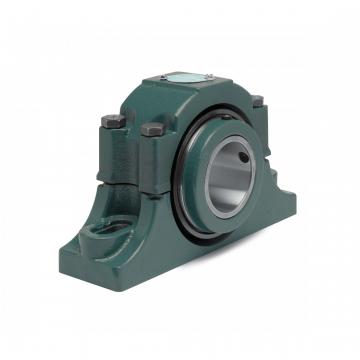 Mounted Tapered Roller Bearings P4B-EXL-212RE
Mounted Tapered Roller Bearings P4B-EXL-212RE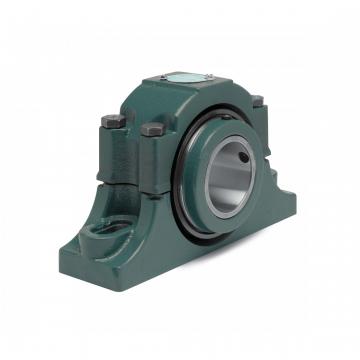 Mounted Tapered Roller Bearings P4B-EXL-400R
Mounted Tapered Roller Bearings P4B-EXL-400R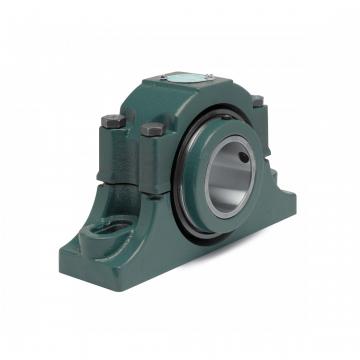 Mounted Tapered Roller Bearings P4B-EXL-400RE
Mounted Tapered Roller Bearings P4B-EXL-400RE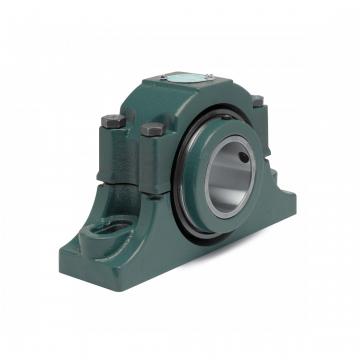 Mounted Tapered Roller Bearings P4B-EXL-315RE
Mounted Tapered Roller Bearings P4B-EXL-315RE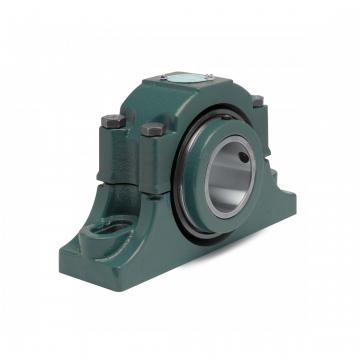 Mounted Tapered Roller Bearings P4B-EXL-207RE
Mounted Tapered Roller Bearings P4B-EXL-207RE